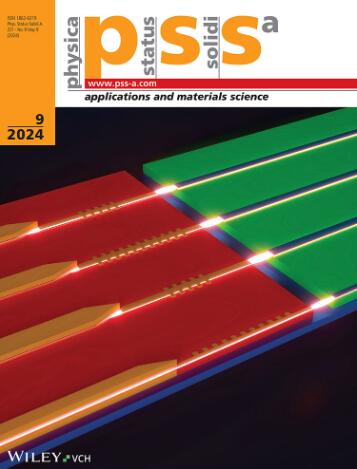通过交流电应用提高单钝化发射极后触点太阳能电池组件的可靠性和再生能力,缓解光照和高温引起的退化
IF 1.9
4区 材料科学
Q3 MATERIALS SCIENCE, MULTIDISCIPLINARY
Physica Status Solidi A-applications and Materials Science
Pub Date : 2024-09-09
DOI:10.1002/pssa.202400453
引用次数: 0
摘要
太阳能电池组件的光照和高温诱导衰减(LeTID)会显著降低其效率和寿命,本研究探索了一种新型方法来解决这一问题。这种方法是在掺硼 p 型钝化发射极后触点(p-PERC)太阳能电池组件上施加不同波形(三角波、正弦波和方波)和频率(5 kHz 和 100 kHz)的交流电。这种方法有效降低了 PERC 太阳能电池银(Ag)触点和硅发射极层之间临界结的串联电阻,从而减少了因高电阻而阻碍的电荷重组,尤其是在高温条件下。因此,电荷流动得到改善,从而减少了能量损失,提高了太阳能电池的效率。研究结果表明,100 千赫的缓慢、平滑的正弦交流波形特别有效,能使电池板的性能恢复到原来的 100%。此外,5 千赫的振荡也显示出相当大的功效,可恢复 96% 以上的性能。正弦波在恢复效率方面超过了三角波和方波。这项研究强调,使用高频交流电是延长太阳能电池板寿命和提高其性能的可行策略。本文章由计算机程序翻译,如有差异,请以英文原文为准。
Enhancing Reliability and Regeneration of Single Passivated Emitter Rear Contact Solar Cell Modules through Alternating Current Power Application to Mitigate Light and Elevated Temperature‐Induced Degradation
The study explores a novel method to combat the Light and Elevated Temperature‐Induced Degradation (LeTID) in solar cell modules, which significantly reduces their efficiency and lifespan. This method involves applying alternating current (AC) of various waveforms (triangular, sinusoidal, and square) and frequencies (5 and 100 kHz) to boron‐doped p‐type passivated emitter rear contact (p‐PERC) solar cell modules. This approach effectively lowers the series resistance at the critical junction between the silver (Ag) contact and the silicon emitter layer of the PERC solar cell, thereby reducing charge recombination hindered by high resistance, especially at elevated temperatures. As a result, there is an improved flow of electrical charges, leading to decreased energy loss and increased solar cell efficiency. The study's findings indicate that a slow, smooth sinusoidal AC waveform at 100 kHz is particularly effective, restoring about 100% of the original performance of the panel. Moreover, oscillations at 5 kHz also show considerable efficacy, recovering more than 96% of the performance. The sinusoidal waveform is noted to surpass both triangular and square waveforms in recovery efficiency. This research highlights the use of high‐frequency AC electricity as a viable strategy to extend the lifespan and enhance the performance of solar panels.
求助全文
通过发布文献求助,成功后即可免费获取论文全文。
去求助
来源期刊
CiteScore
3.70
自引率
5.00%
发文量
393
审稿时长
2 months
期刊介绍:
The physica status solidi (pss) journal group is devoted to the thorough peer review and the rapid publication of new and important results in all fields of solid state and materials physics, from basic science to applications and devices. Among the largest and most established international publications, the pss journals publish reviews, letters and original articles, as regular content as well as in special issues and topical sections.

 求助内容:
求助内容: 应助结果提醒方式:
应助结果提醒方式:


